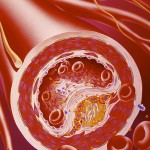Completed
Objectives: To compare the acute effects of gamma delta rich tocotrienol fractions (gd-TRF) on insulin sensitivity, metabolic risk markers and postprandial lipemia in individuals at risk for metabolic syndrome.
Study Type: Interventional
Study Design: Randomized, double-blind, cross-over
Subjects: Patients at risk for metabolic syndrome
Intervention: Gamma-Delta tocotrienol, placebo
Primary Outcome: C-peptide [ Time Frame: 0, 15, 30, 60, 90, 120, 180, 240, 300, 360 min ]
Secondary Outcome: 1) Insulin sensitivity (insulin, glucose) [ Time Frame: 0, 5, 15, 30, 60, 90, 120, 180, 240, 300, 360 min ]
2) Non-esterified fatty acid (NEFA) [ Time Frame: 0, 5, 15, 30, 60, 90, 120, 180, 240, 300, 360 min ]
3) Non-esterified fatty acid (NEFA) [ Time Frame: 0, 5, 15, 30, 60, 90, 120, 180, 240, 300, 360 min ]
4) Inflammatory markers (IL-6, IL-1β, TNF-α) [ Time Frame: 0, 120, 240, 360 min ]
5) PBMC nuclear factor-κappa B (NF-κB) [ Time Frame: 0, 240, 360 min ]
Methodology: A randomised, double-blind, crossover trial will be undertaken to test the acute effects of supplementation of 200 mg, 400 mg gd-TRF vs. placebo. There are 3 occasions for subjects to attend during postprandial period and these occasions will be separated by at least one week. On the day preceding the postprandial high fat meal challenge, subjects will be asked to avoid food high in fat, alcohol, caffeine and taking part in any strenuous exercise. Subjects will be provided with a standardised low fat meal (containing < 10 g fat) on the day preceding the postprandial study days to consume as their evening meal. They will be asked to fast overnight and instructed to avoid eating or drinking anything, except water, after 10 pm. Fasting blood samples will be collected on the next day and subjects will then consume the test meal, containing 50 g test fat supplemented with gd-TRF. Further venous blood samples will be collected at regular intervals for up to 6 hours postprandially.
Read More

